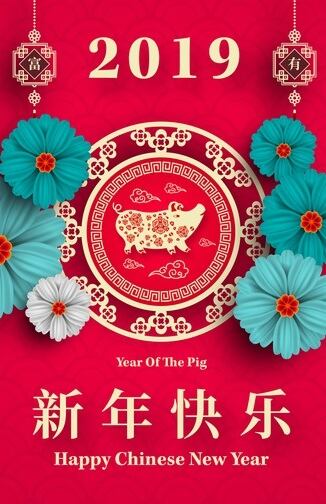Adelaide startup Trust in Taste has devised a channel whereby targeted messages are sent to Chinese wine drinkers through social media platform WeChat, inviting them to sign-up for an in-home tasting of Aussie wines for A$5 (US$3.60).
Those who purchase the service will receive three 60ml bottles of wine from South Australia home delivered for a cellar door-style tasting.
When scanned, a QR code on each bottle will take the taster to the Trust in Taste WeChat store, which provides more information about the wine, including a video with the winemaker. Larger 750ml bottles can then be ordered on the website for about A$30 each, and feedback can be given on each sample.
Cracking the Chinese market
Co-founder Peter Evans said the idea came to him when an Australian winery approached the Asia-focused commerce business he runs with his brother, Mawson Global, to find out how they could crack the Chinese market.
“I took them to China to see a distributor. The first thing the distributor asked was how much marketing money they had to give him,” Evans told BeverageDaily.
“When it turned out there was no budget, the distributor wasn’t interested. To make money, even if you have good wine, you have to differentiate. It’s really tough finding good distributors in China; they’re already taken.”
Looking for a different approach, he mentioned his quandary to staff in Mawson’s Qingdao office for their thoughts.
“They said they’d be happy to pay A$30 for a bottle of wine; that’s not an issue. The problem was how do they find out about the product? When you go into a wine store, a supermarket or even online, and there’s just this massive group of labels, so how do you get yours to stand out? The answer turned out to be through WeChat.”
Evans chose the mobile service as Trust in Taste’s key platform as a means to create a social venture that got people talking to other people, rather than relying on advertising and traditional marketing.
The fact that WeChat is taking over from credit cards in China as a payment gateway added to the appeal, as marketing, ordering, interaction and transactions can be done all in the same place.
Chinese New Year and new opportunities
Evans said the company’s research found that the target consumer in China is likely to be female, 25-35 years old, and degree educated. She lives in a big city, drinks two to three bottles of wine a month with friends in a quiet place and is prepared to pay A$20-$60 for a bottle.
This equates to almost 50m people in the direct target market and 100m when men are included.
“It’s direct to consumer wine but we give people the opportunity to sample the wine before they buy it to take the risk out—we know that works because cellar doors work,” Evans explained.
“We’re trying to provide a cellar door experience in every home in the world starting in China. This is a newer generation coming through wanting to learn a bit more about wine and drink it with friends.
“It’s also about turning up to a dinner party for Chinese New Year, presenting a bottle of wine and not being embarrassed about how it might taste.”

The first trial samples were distributed in April but then a recent cornerstone investment by a venture capital and private equity fund has allowed Trust in Taste to conduct further market research and ramp up the operation ahead of Chinese New Year, which begins on February 5.
So far about 1,500 tasting kits have been sent to consumers mainly in Shanghai, Beijing and Guangzhou with about a 10% conversion rate into full bottle sales for certain labels.
Evans said in initial trials 40% of WeChat users who clicked through to the Trust in Taste WeChat store went on to order a sample tasting.
He said the 2019 goal was to expand the business in China to 200,000 samples by the end of the year with a conversion rate of 20%.
“People will go and do tastings in China but we haven’t found anyone else doing what we’re doing,” Evans said.
Taking the risk out of exports
China is Australia’s biggest export market for wine with more than A$1bn worth of Australian wine heading there each year. Australia is second only to France for wine exports to China.
So far, five South Australian wineries have signed up with Trust in Taste from the Barossa, McLaren Vale, Clare Valley, Riverland and Adelaide Plains growing regions. Wine varieties shipped so far include Shiraz, Cabernet Sauvignon, Riesling and Pinot Noir.
Participating wineries deliver a pallet consisting of about 60 cases of wine to Trust in Taste in Australia, from which it is shipped to their warehouse in China where a portion of it is put into sample bottles.
If the wine does not all sell during the 120-day consignment period it can be returned to the winery for sale in Australia.
The cost to the winery for the marketing, videos, shipping, import/export paperwork and 1,000 tasting samples is $3,500.
Evans said this system also takes the risk out of exporting to China for producers and gave them an additional channel for reaching new consumers.
He said the online feedback provided after a tasting also gave the participating wineries a rare insight into “the most opaque market in the world”.
“We take the wine from them on consignment, ship it to China, put in the small sample packs and put it into the mouths of 1,000 people. They either buy the wine or tell us why they don’t like it,” Evans explained.
“What the wineries are appreciating is that opaque market has disappeared, they are now talking to consumers who are telling them x, y or z about their wine.
“If you send it out to 1,000 people and you get 200 responses then that’s about 198 more than you would get if you were selling it through a distributor—that’s what the wineries are telling us. They would just get no feedback previously.”
Growth potential
Evans said he hopes to have 30 Australian wineries on board by the end of 2019 and is looking for more investment to help roll out the model globally. He is looking to welcome wineries from outside Australia and tailor the model to incorporate the products of non-wine clients.
“We’re a distribution company and our background has been distribution of different products, and we’ve really been cutting out the middle man,” he said.
“We’ll take product from anywhere, and though we are beginning with wine, there are certainly other products on the agenda. We’re concentrating on China because the numbers are really attractive but the concept and the marketing work anywhere in the world.
“All we need is a population area over five million, good messaging and good logistics—wherever you can deliver within a day,” he added.

